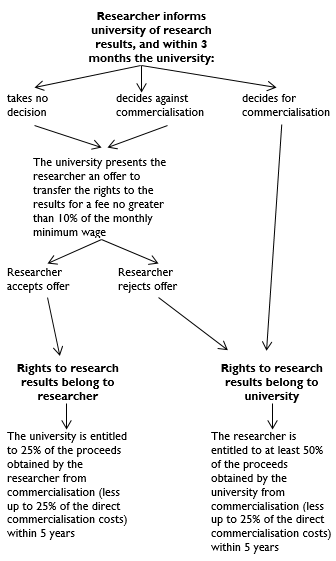New rules for commercialisation of university research
Amendments to the Higher Education Law went into effect on 1 October 2014. Among a number of major modifications to the existing operating model for Polish universities, there are new rules for commercialisation of results of research and development and related knowhow.
Before the change, one of the basic statutory tasks of Polish universities was “conducting scientific research and development work and performing research services” (Art. 13(1)(3)). Under the new wording, this provision now refers to “conducting scientific research and development work, performing research services, and transfer of technology to the economy.” This change well reflects the purpose of the amendments, which is to increase the scale of technology transfers from the universities into commercial practice (measured for example by the scale of commercial exploitation of patents filed by researchers) and, it should follow, increased innovativeness of Polish enterprises.
Direct and indirect commercialisation
Transfer of technologies created at universities will take place through either direct or indirect commercialisation. In simple terms, direct commercialisation involves sale or licensing of R&D results and related knowhow. Indirect commercialisation involves establishment of wholly owned companies to implement the R&D results and related knowhow.
As a rule, direct commercialisation is to be handled by technology transfer centres. This may be an impetus to establish them, because as an official from the Ministry of Science and Higher Education admitted at a session of the Sejm’s Innovation and Modern Technologies Committee in September 2014, many universities, including polytechnics, have never established such centres. Apart from technology transfer centres, initiatives in the area of direct commercialisation can also be handled by special-purpose companies (SPVs).
Indirect commercialisation is supposed to be the domain of SPVs established by the university in the form of a wholly owned company. Unlike under prior law, the university will be allowed to cover the shares in the SPV not only through in-kind contribution of the results of the research and development work and related knowhow. The law also provides for tax incentives in the context of commercialisation.
“Enfranchisement of researchers”
The main changes involve “enfranchisement of researchers” (although this is not an entirely apt term), i.e. participation in commercialisation of technology by the researchers who created it. Contrary to the original proposals, the institution of “professor privilege” was not adopted. Instead, a flexible solution was adopted under which a public university and a researcher (or group of researchers) will be able through an agreement to adopt the form of commercialisation of R&D results and related knowhow that best suits them. Such an agreement should, among other things, define who and in what scope is entitled to the rights connected with the R&D results and knowhow, and the proportions in which the proceeds from commercialisation will be divided.
If the parties do not agree otherwise, statutory commercialisation rules will apply. Under these default rule, when a member of the scientific staff informs the university of the R&D results and related knowhow, the university will have three months to reach a decision on their commercialisation. If the university does not take a decision or decides not to commercialise the results, it will be required to conclude an agreement with the researcher transferring the rights to the results for a nominal fee. The university will then be entitled to 25% of the proceeds obtained by the researcher from the commercialisation (less a maximum of 25% of the direct costs of commercialisation).
If the researcher does not accept the commercialisation agreement offered by the university, all rights will be held by the university. If the researcher does accept the agreement, he or she will be entitled to no less than 50% of the proceeds from commercialisation (less a maximum of 25% of the direct costs of commercialisation).
One of the most important changes is the more flexible procedure for commercialisation of research results: the university and the researcher (or group of researchers) will themselves be able to establish the rules under which the research results will be commercialised. Moreover, the statutory track that will apply if they do not reach agreement guarantees participation in the proceeds from commercialisation by both researchers and universities, with the researcher guaranteed a share of 50% of the proceeds, less a portion of the costs.
These rules do not apply to the results of contracted R&D or the results of R&D gathered using funding in a manner governing disposal of the results or research, development work and related knowhow different than that provided for in the act.
Commercialisation path
The diagram below presents in simplified form the path to commercialisation of research results under the new regulations.

In practice, it will require a carefully thought-out approach to secure the interests of both the university and the researcher. To avoid doubts, it will be necessary among other things to specify the rights of each party in as much detail as possible. Some solutions may not be effective from the perspective of taxation or state aid (if used in conducting the R&D). Undoubtedly, however, the amendment opens up new possibilities for growth of the R&D sector in Poland.
The changes result from entry into force of the Act of 11 July 2014 Amending the Higher Education Law and Certain Other Acts.
